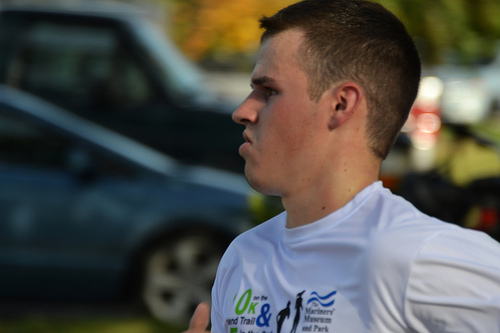
Whenever we set goals, especially big ones, we expose ourselves to the risk of failing. When we fail to achieve a goal the tendency is to see ourselves as failures.
But that’s not the case.
When we fail to achieve a goal we’re provided with an opportunity to learn what doesn’t work and what we could be doing better.
In 2013 I set a goal of doing 50 consecutive chin-ups by my 50th birthday. I had around 8 months to get the job done. Although I knew it would be hard I was willing to train hard.
I set up a chin-up bar in a doorway of our house. The toll for passing through that doorway was 3 chin-ups. I did chin-ups at Jacobs Ladder. I did weighted chin-ups, used exercise bands, and bought Fat Grips to increase my grip strength.
But progress was slow.
By the end of June I knew I wasn’t going to make it. My best effort was 12. 50 was just too far away.
I quit.
What did I learn from this failure?
Simply, I learned that the goal wasn’t realistic. Sure it was a stretch – I got that part right – but the number didn’t relate to the number I’d achieved previously.
The mistake I made is a mistake a lot of sales people make when they set targets. They listen to a motivational sales guru and commit to achieving twice the number of sales they did in the previous year.
Just like my chin-up challenge these targets are often unrealistic.
But there’s a better way of achieving goals and it’s based on a marathon training programme.
One of the key principals of training for long distance events is to not step up your training too quickly. That means not increasing your weekly training by more than 10% from the previous week.
This graduated step up in intensity reduces the likelihood of sustaining an overuse injury. It also gives the athlete a series of small wins. These have a cumulative effect of building a fitness base and of giving the athlete the confidence to attempt the next step in their programme.
Applying this principal to sales targets, think of your sales activity like an athlete does their training. In the same way an athlete gradually increases their training load, increase your prospecting and marketing activities slowly.
Before lifting your intensity calculate your current activity levels. In other words, find out how sales fit you are. Then look to gradually lift your activity levels by small increments over the course of the next 12 months.
During the course of the month measure and record your activities. At the end of each month take the time to reflect on your performance. Regardless of whether you achieved your targets or came up short take responsibility for them.
Reflect on what went well and why and what you could have done better. Doing this will empower you to work on the processes that contribute to you achieving the results you’re chasing.
Photo credit. Tobyotter on Flickr


